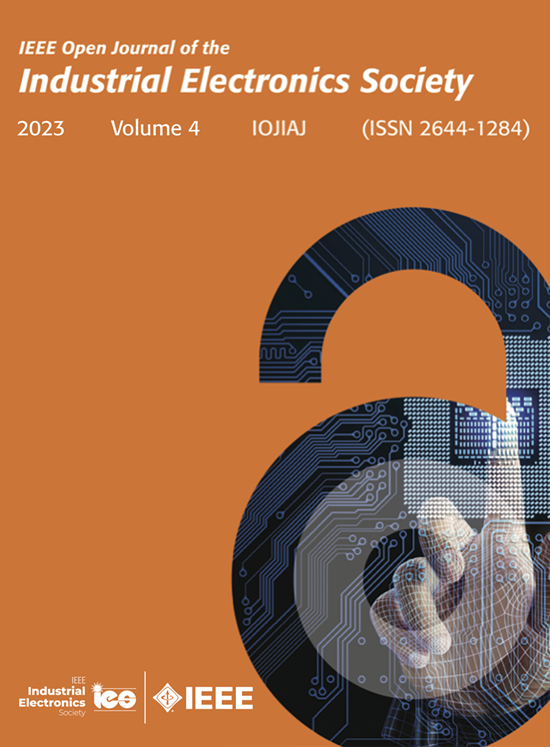基于数据驱动的IPMSM转子位置误差估计的轻量级LSTM和GRU设计
IF 4.3
Q1 ENGINEERING, ELECTRICAL & ELECTRONIC
IEEE Open Journal of the Industrial Electronics Society
Pub Date : 2025-03-19
DOI:10.1109/OJIES.2025.3571204
引用次数: 0
摘要
高性能电机驱动器依赖于闭环控制,通常从物理编码器或转子位置估计器获得转子位置。然而,众所周知,测量/估计的位置与实际位置之间可能存在差异。这可能是由于编码器的机械固定松动,初始化错误,无传感器估计错误等。转子位置误差如果不进行补偿,可能会导致转矩波动,降低系统效率。与迄今为止介绍的主流迭代或基于模型的方法不同,本文侧重于数据驱动的解决方案,该解决方案基于使用轻量级长短期记忆(LSTM)和门控循环单元(GRU)神经网络,并与实时嵌入式微控制器一起实现。这些新兴的递归神经网络(RNNs)以多层感知器的常见选择为基准,在计算机科学学科中受到了极大的关注,但在基于电力电子的电力驱动中却很少受到关注,它们被设计用于高精度估计位置误差。在仔细考虑了固定和旋转参考系中的嵌入式数据、数据下采样和实时计算能力后,本文表明,这些新兴的rnn对驱动系统中固有的测量噪声和谐波具有更强的鲁棒性。它们被证明可以更好地泛化到非训练操作点或数据,这是处理闭环控制实验数据时的一个基本特征。基于LSTM和gru的轻量级神经网络在2.2 kw内部永磁同步电机上进行了广泛的仿真和实验,用于估计步进和坡道型动态转子位置误差。通过与经典转子位置迭代修正方法的比较,证实了其在估计速度和精度上的优越性,表明数据驱动概念在改进电力驱动方面具有良好的潜力。本文章由计算机程序翻译,如有差异,请以英文原文为准。
Lightweight LSTM and GRU Design for Data-Driven Rotor Position Error Estimation in IPMSM Drives
High-performance motor drives rely on closed-loop controls that typically obtain rotor position from a physical encoder or a rotor position estimator. However, it is well established that there may be discrepancies between the measured/estimated position and the actual one. This may be due to the loosening of the encoder's mechanical fixing, initialization errors, sensorless estimation errors, etc. The rotor position error, if left uncompensated, may lead to torque fluctuation and reduced system efficiency. Different from the mainstream iterative or model-based methods introduced thus far, this article focused on a data-driven solution that is based on the use of lightweight long short-term memory (LSTM) and gated recurrent unit (GRU) neural networks, realized in conjunction with real-time embedded microcontrollers. Benchmarked against the familiar choice of multilayer perceptron, these emerging recurrent neural networks (RNNs), which have received tremendous attention in computer science subjects but much less in power- electronic-based electric drives, are designed for estimating position errors with high accuracy. Upon careful consideration of the embedded data in the stationary and rotating reference frames, data down sampling, and real-time computing capability, this article shows that these emerging RNNs are potentially more robust against measurement noises and harmonics inherently present in drive systems. They are proven to better generalize to nontraining operating points or data, constituting an essential feature when dealing with closed-loop control's experimental data. The proposed lightweight LSTM- and GRU-based neural networks are extensively validated using a 2.2-kW interior permanent-magnet synchronous motors through simulations and experiments for estimating the step- and ramp-type dynamic rotor position errors. The comparative evaluation against the classical iterative rotor position correction method confirms its superiority in terms of estimation speed and accuracy, suggesting a good potential of the data-driven concept in improving electric drives.
求助全文
通过发布文献求助,成功后即可免费获取论文全文。
去求助
来源期刊

IEEE Open Journal of the Industrial Electronics Society
ENGINEERING, ELECTRICAL & ELECTRONIC-
CiteScore
10.80
自引率
2.40%
发文量
33
审稿时长
12 weeks
期刊介绍:
The IEEE Open Journal of the Industrial Electronics Society is dedicated to advancing information-intensive, knowledge-based automation, and digitalization, aiming to enhance various industrial and infrastructural ecosystems including energy, mobility, health, and home/building infrastructure. Encompassing a range of techniques leveraging data and information acquisition, analysis, manipulation, and distribution, the journal strives to achieve greater flexibility, efficiency, effectiveness, reliability, and security within digitalized and networked environments.
Our scope provides a platform for discourse and dissemination of the latest developments in numerous research and innovation areas. These include electrical components and systems, smart grids, industrial cyber-physical systems, motion control, robotics and mechatronics, sensors and actuators, factory and building communication and automation, industrial digitalization, flexible and reconfigurable manufacturing, assistant systems, industrial applications of artificial intelligence and data science, as well as the implementation of machine learning, artificial neural networks, and fuzzy logic. Additionally, we explore human factors in digitalized and networked ecosystems. Join us in exploring and shaping the future of industrial electronics and digitalization.
 求助内容:
求助内容: 应助结果提醒方式:
应助结果提醒方式:


